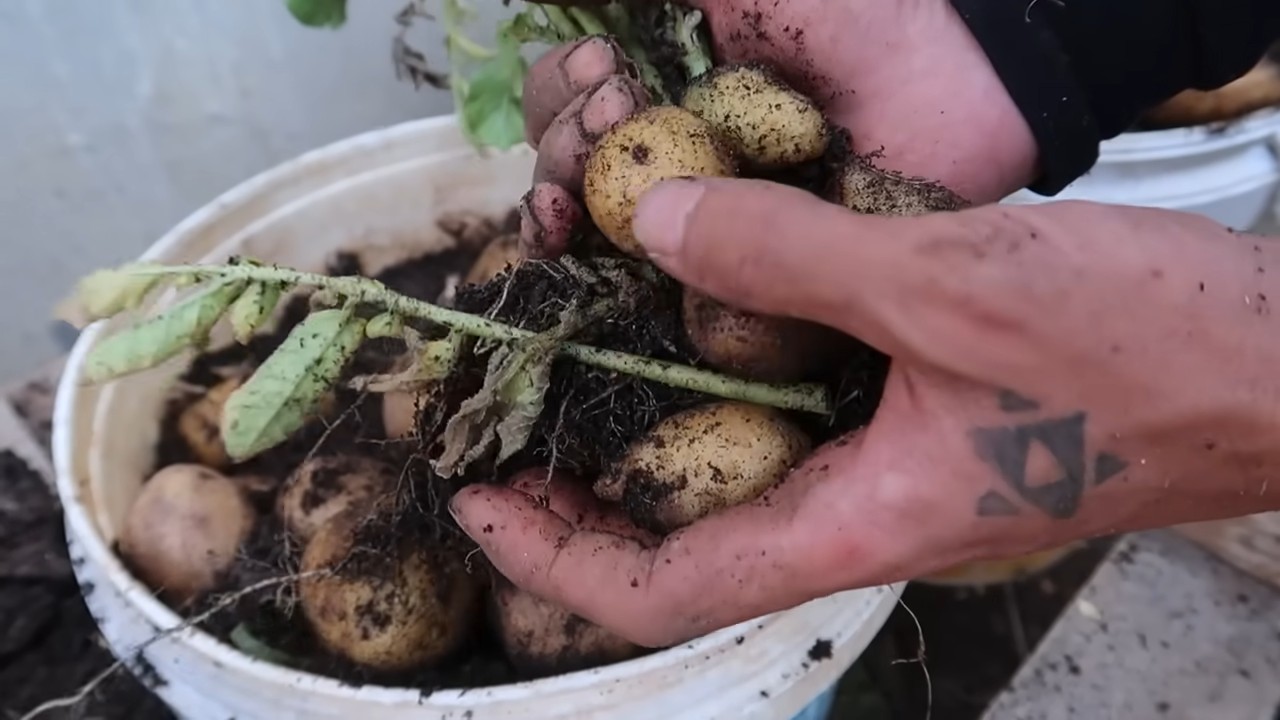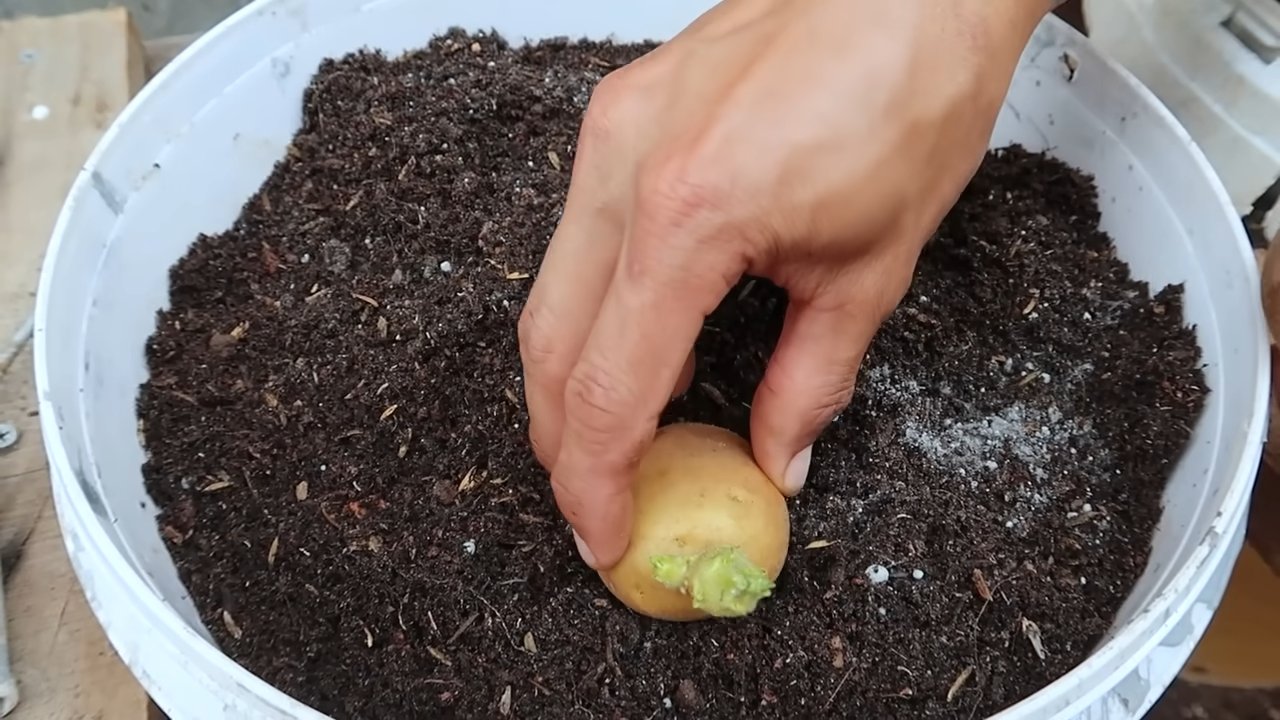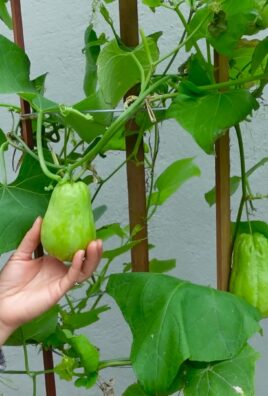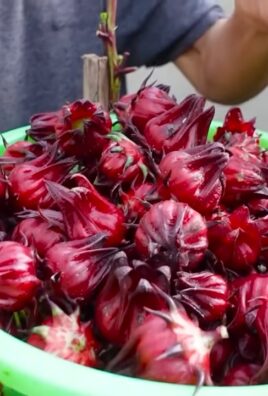Growing potatoes in containers might sound like a quirky experiment, but trust me, it’s a game-changer for any home gardener, whether you’re a seasoned pro or just starting out! Forget sprawling gardens and back-breaking digging; this method brings the joy of fresh, homegrown potatoes right to your patio, balcony, or even your kitchen windowsill.
Potatoes have been a staple food for centuries, with roots (pun intended!) tracing back to the Andes Mountains. From fueling ancient civilizations to becoming a cornerstone of modern cuisine, these humble tubers have a rich and fascinating history. But let’s be honest, traditionally growing them can be a bit of a hassle. That’s where container gardening comes in!
Why should you embrace the art of growing potatoes in containers? Well, for starters, it’s incredibly space-efficient. If you’re like me and dream of a bountiful harvest but are limited by space, this is your answer. Plus, it gives you complete control over the soil quality, minimizing the risk of pests and diseases. Imagine the satisfaction of harvesting your own delicious, organically grown potatoes, knowing exactly where they came from and how they were nurtured. This DIY guide will walk you through every step, from choosing the right container and seed potatoes to harvesting your very own spuds. Get ready to dig in (again, pun intended!) and unlock the secrets to a potato-packed harvest, no matter how small your space!

Growing Potatoes in Containers: A Bumper Crop on Your Patio!
Hey there, fellow gardening enthusiasts! I’m so excited to share my tried-and-true method for growing potatoes in containers. Forget vast fields – you can enjoy a fantastic potato harvest right on your balcony, patio, or even a sunny windowsill! This guide will walk you through every step, from choosing the right container to harvesting your delicious, homegrown spuds. Let’s get digging (pun intended!)!
Choosing the Right Container and Seed Potatoes
Before we get our hands dirty, let’s talk about the essentials. The right container and seed potatoes are crucial for success.
* Container Size: Bigger is better! Potatoes need room to grow, both above and below the soil. I recommend a container that’s at least 15 gallons in size. Think large buckets, trash cans (with drainage holes, of course!), grow bags, or even repurposed storage bins. The deeper the container, the more potatoes you’ll harvest.
* Material: Plastic, metal, or fabric containers all work well. Fabric grow bags are fantastic because they allow for excellent drainage and aeration, preventing root rot.
* Drainage: This is non-negotiable! Potatoes hate sitting in soggy soil. Make sure your container has plenty of drainage holes. If you’re using a container without pre-made holes, drill several into the bottom.
* Seed Potatoes: These aren’t seeds in the traditional sense. They’re actually small potatoes or pieces of potatoes with “eyes” (those little buds that sprout). You can buy certified seed potatoes from a garden center or online.
* Variety: Choose a potato variety that suits your taste and growing conditions. Early-season varieties like ‘Yukon Gold’ or ‘Red Norland’ are great for containers because they mature quickly. ‘Russet Burbank’ is a classic baking potato, but it takes longer to mature.
* Chitting (Optional): Chitting is the process of encouraging your seed potatoes to sprout before planting. This gives them a head start and can lead to an earlier harvest. To chit your potatoes, place them in a cool, bright location (but not direct sunlight) for a few weeks. You’ll see small green sprouts emerging from the eyes.
Preparing Your Container and Soil
Now that we’ve got our container and seed potatoes sorted, let’s get ready to plant!
* Cleaning: If you’re reusing a container, give it a good scrub with soap and water to remove any lingering dirt or pathogens.
* Drainage Layer: While not always necessary, adding a layer of gravel or broken pottery to the bottom of the container can improve drainage. I usually skip this step and just make sure my potting mix is well-draining.
* Potting Mix: Use a high-quality potting mix specifically formulated for containers. Avoid using garden soil, as it can become compacted and doesn’t drain well. A mix of peat moss, perlite, and vermiculite is a good option. You can also add compost for extra nutrients.
* Initial Soil Level: Fill the container with about 4-6 inches of potting mix. This will be the base for your seed potatoes.
Planting Your Seed Potatoes
This is where the magic happens!
1. Cut the Seed Potatoes (if necessary): If your seed potatoes are large, you can cut them into pieces, making sure each piece has at least one or two eyes. Let the cut pieces dry for a day or two to prevent rotting. If your seed potatoes are small, you can plant them whole.
2. Planting Depth: Place the seed potatoes on top of the soil, with the eyes facing upwards. Space them about 8-12 inches apart if you’re planting multiple potatoes in the same container.
3. Cover with Soil: Cover the seed potatoes with another 4-6 inches of potting mix.
4. Water Gently: Water the soil gently until it’s evenly moist but not soggy.
The “Hilling” Process: Maximizing Your Potato Harvest
This is the secret to a bountiful potato crop! “Hilling” encourages the potato plants to produce more tubers along their stems.
1. Wait for Sprouts: After a week or two, you’ll see green shoots emerging from the soil.
2. Add More Soil: Once the shoots are about 6-8 inches tall, add more potting mix to the container, covering the stems up to about halfway. Leave the top leaves exposed.
3. Repeat the Process: Continue adding soil every few weeks as the plants grow taller. The goal is to keep burying the stems, encouraging them to produce more potatoes. I usually do this until the container is almost full.
4. Water Regularly: Keep the soil consistently moist, but avoid overwatering. Potatoes need plenty of water, especially during hot weather.
5. Fertilize: Feed your potato plants with a balanced fertilizer every few weeks. Look for a fertilizer with a higher potassium content, as this promotes tuber development. I like to use a liquid fertilizer diluted according to the package instructions.
Caring for Your Potato Plants
Consistent care is key to a healthy and productive potato crop.
* Sunlight: Potatoes need at least 6-8 hours of sunlight per day. Place your container in a sunny location.
* Watering: Water deeply whenever the top inch of soil feels dry. Avoid letting the soil dry out completely, as this can stress the plants.
* Fertilizing: As mentioned earlier, fertilize regularly with a balanced fertilizer.
* Pest Control: Keep an eye out for pests like aphids, potato beetles, and flea beetles. Hand-picking pests is often the easiest solution for small container gardens. You can also use insecticidal soap or neem oil if necessary.
* Disease Prevention: Good air circulation and proper watering can help prevent diseases like blight. Avoid overhead watering, as this can create a humid environment that encourages fungal growth.
Harvesting Your Potatoes
The moment we’ve all been waiting for!
1. Timing: Early-season varieties can be harvested as “new potatoes” about 70-80 days after planting. These are small, tender potatoes with thin skins. For mature potatoes, wait until the foliage starts to turn yellow and die back, usually around 90-100 days.
2. Test Dig: Before harvesting the entire crop, dig around the edges of the container to check the size and maturity of the potatoes.
3. Harvesting: Gently tip the container onto its side and carefully remove the potatoes from the soil. You can also use a garden fork to loosen the soil and lift the potatoes out.
4. Curing (Optional): If you plan to store your potatoes for an extended period, cure them for a week or two in a cool, dark, and well-ventilated place. This helps to toughen the skins and prevent rotting.
5. Storage: Store cured potatoes in a cool, dark, and dry place. Avoid storing them near apples or bananas, as these fruits release ethylene gas, which can cause potatoes to sprout prematurely.
Troubleshooting Common Problems
Even with the best care, you might encounter a few challenges along the way. Here are some common problems and how to address them:
* Yellowing Leaves: This could be a sign of overwatering, underwatering, nutrient deficiency, or disease. Check the soil moisture and adjust your watering accordingly. Fertilize with a balanced fertilizer. If you suspect disease, remove any affected leaves and treat with a fungicide if necessary.
* Potato Beetles: These pesky beetles can quickly defoliate your potato plants. Hand-pick them off the plants or use insecticidal soap.
* Scab: This disease causes rough, scabby patches on the potato skins. It’s more common in alkaline soils. Amend your soil with sulfur to lower the pH.
* Small Potatoes: This could be due to insufficient sunlight, water, or nutrients. Make sure your plants are getting enough sunlight and water, and fertilize regularly.
Enjoy Your Homegrown Potatoes!
Congratulations! You’ve successfully grown potatoes in containers. Now it’s time to enjoy the fruits (or rather, tubers!) of your labor. Use your homegrown potatoes in your favorite recipes, from mashed potatoes and roasted potatoes to potato salad and potato soup. There’s nothing quite like the taste of fresh, homegrown potatoes! I hope this guide has inspired you to give container potato gardening a try. Happy growing!

Conclusion
So, there you have it! Growing potatoes in containers is not just a gardening trend; it’s a game-changer for anyone, regardless of space or experience. We’ve walked through the simple steps, highlighted the benefits, and hopefully, inspired you to ditch the grocery store spuds (at least some of the time!) and embrace the satisfaction of harvesting your own homegrown goodness.
Why is this DIY trick a must-try? Because it democratizes potato cultivation. No sprawling garden? No problem! A sunny balcony, a patio, or even a well-lit deck can become your personal potato patch. It’s also incredibly rewarding. Watching those tiny seed potatoes sprout, the foliage flourish, and finally, unearthing a bounty of fresh, earthy potatoes is an experience that connects you to the natural world in a tangible and delicious way. Plus, container gardening offers unparalleled control over soil quality and pest management, leading to healthier, more flavorful potatoes.
But the beauty of this method lies in its adaptability. Feel free to experiment with different potato varieties. Russets are fantastic for baking and frying, Yukon Golds offer a creamy texture perfect for mashed potatoes, and fingerling potatoes bring a unique shape and flavor to salads. Don’t be afraid to mix and match soil amendments to find the perfect blend for your climate and potato preference. Consider adding compost tea during the growing season for an extra boost of nutrients.
And speaking of variations, think beyond the traditional container. While fabric grow bags are excellent for aeration and drainage, you can also repurpose large plastic bins, buckets, or even old tires (ensure they are safe and non-toxic, of course!). The key is to ensure adequate drainage and sufficient space for the potatoes to develop.
Ready to embark on your potato-growing adventure? We wholeheartedly encourage you to give this DIY trick a try. It’s easier than you think, and the rewards are immeasurable. Imagine the pride of serving a meal featuring potatoes you nurtured from start to finish. Picture the delight of sharing your homegrown harvest with friends and family.
But don’t just take our word for it. The real magic happens when you get your hands dirty and experience the joy of growing your own food. So, grab some seed potatoes, gather your containers, and prepare to be amazed.
And most importantly, we want to hear about your experience! Share your successes, your challenges, and your tips with us and the wider gardening community. Post photos of your potato plants, describe your favorite potato recipes, and let us know what you learned along the way. Together, we can create a thriving community of container potato growers, sharing knowledge and inspiring others to embrace the joys of homegrown food. Let’s all learn how to master growing potatoes in containers.
Frequently Asked Questions (FAQ)
What kind of potatoes should I use for growing in containers?
You’ll want to use seed potatoes, which are potatoes specifically grown for planting. These are certified disease-free and will give you the best results. You can find them at most garden centers or online retailers. Avoid using potatoes from the grocery store, as they may have been treated to prevent sprouting or may carry diseases. As for varieties, it depends on your preference! Russets are great for baking and frying, Yukon Golds are excellent for mashed potatoes, and fingerlings are delicious in salads. Experiment to find your favorites!
How big of a container do I need for growing potatoes?
The size of the container is crucial for successful potato growth. A good rule of thumb is to use a container that is at least 15-20 gallons in size. This will provide enough space for the potato plants to develop a healthy root system and produce a decent yield. The container should also be at least 12 inches in diameter and 12 inches deep. Fabric grow bags are a popular choice because they allow for good drainage and aeration.
What kind of soil should I use for growing potatoes in containers?
Potatoes need well-draining soil that is rich in organic matter. A good mix would be equal parts of potting soil, compost, and peat moss (or coco coir as a sustainable alternative). Avoid using garden soil, as it can be too heavy and may not drain well, leading to root rot. You can also add some slow-release fertilizer to the soil mix to provide the potatoes with the nutrients they need throughout the growing season.
How often should I water my potato plants in containers?
Watering frequency depends on the weather and the type of container you’re using. Generally, you should water your potato plants when the top inch of soil feels dry to the touch. Avoid overwatering, as this can lead to root rot. During hot, dry weather, you may need to water your plants daily. Make sure the container has good drainage to prevent water from pooling at the bottom.
How much sunlight do potatoes need when grown in containers?
Potatoes need at least 6-8 hours of sunlight per day to thrive. Choose a location for your containers that receives plenty of direct sunlight. If you live in a very hot climate, you may need to provide some afternoon shade to prevent the plants from getting scorched.
How do I “hill” potatoes in containers?
“Hilling” is the process of adding more soil to the container as the potato plants grow. This encourages the plants to produce more potatoes along the stems. When the potato plants are about 6 inches tall, add a few inches of soil to the container, covering the lower part of the stems. Repeat this process every few weeks until the container is almost full.
When can I harvest my potatoes from containers?
You can start harvesting “new potatoes” (small, immature potatoes) about 7-8 weeks after planting. To harvest new potatoes, carefully dig around the edges of the container and remove a few potatoes. For mature potatoes, wait until the foliage starts to die back, usually about 12-14 weeks after planting. At this point, you can dump the entire contents of the container onto a tarp and harvest all the potatoes.
What are some common pests and diseases that affect potatoes grown in containers?
Common pests that can affect potatoes include aphids, potato beetles, and flea beetles. You can control these pests by hand-picking them off the plants, using insecticidal soap, or introducing beneficial insects like ladybugs. Common diseases include early blight and late blight. To prevent these diseases, make sure to use disease-free seed potatoes, provide good air circulation, and avoid overhead watering.
Can I grow potatoes in containers indoors?
While it’s possible to grow potatoes indoors, it can be challenging to provide them with the amount of sunlight they need. If you want to try growing potatoes indoors, you’ll need to use grow lights to supplement the natural light. You’ll also need to ensure that the plants have good air circulation and are not overwatered.
What do I do with my potato plants after harvesting the potatoes?
After harvesting the potatoes, you can compost the foliage. Do not compost the foliage if the plants showed signs of disease. The soil in the container can be reused for other plants, but it’s a good idea to amend it with fresh compost and fertilizer before planting anything new.




Leave a Comment